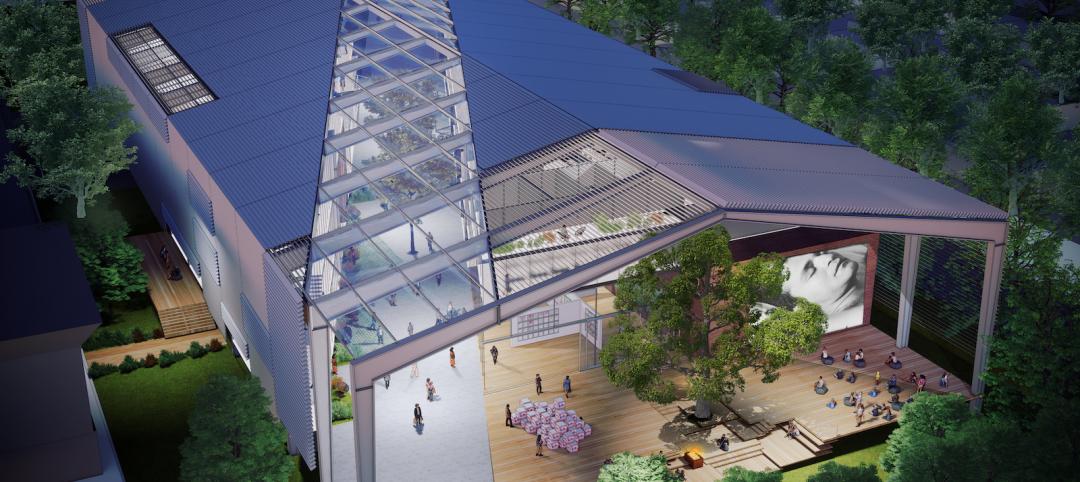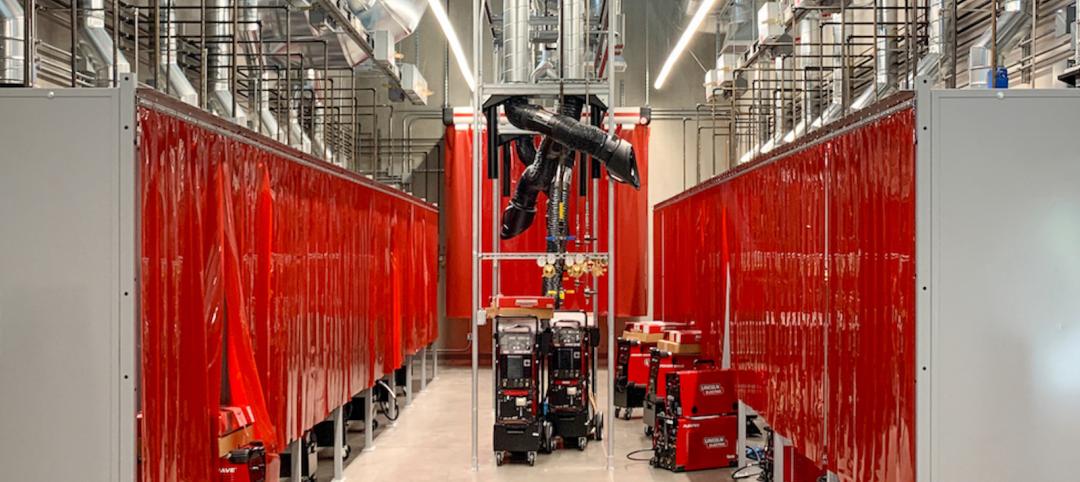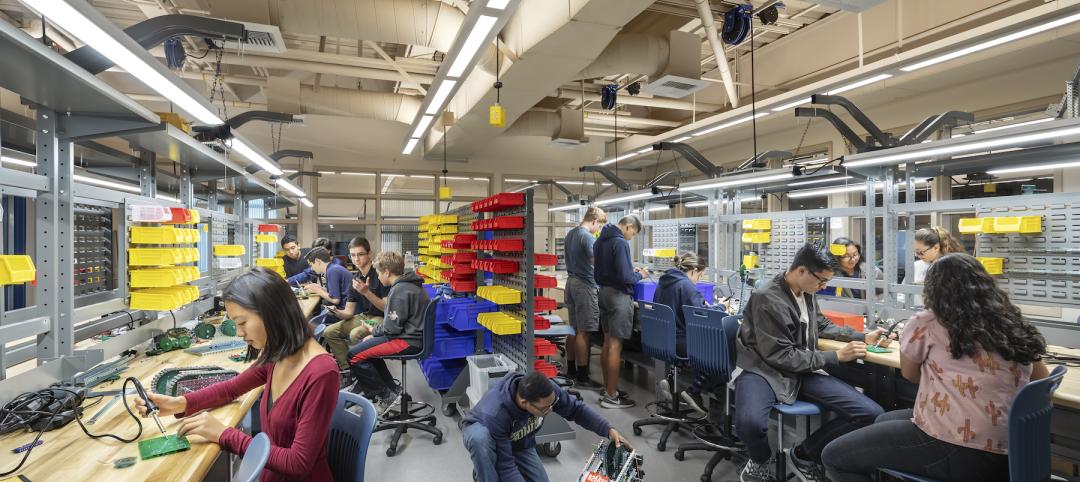Predictable, flexible, and efficient, prefabrication is quickly becoming an integral part of many construction projects. Though not a one-size-fits-all solution, prefabrication can address a multitude of common challenges—particularly as schedules continue accelerating, while labor capacity is decreasing.
From jobsite issues and location constraints to sequencing and scheduling, each project comes with a unique set of challenges, requiring a tailored solution on a per-project basis. While prefabrication, its utilization, and the approach differ for each project, the results and benefits for owners are consistent.
Is prefabrication right for my construction project and how can I plan for success? There are many factors requiring careful consideration when determining whether a project is a good fit for prefabrication and optimizing a project’s prefabrication plans.
Owner requirements
- Owner prefabrication expectations — Some owners, particularly in certain industries such as mission critical and healthcare, have prefabrication parameters that teams must work within. For example, when owners have multiple projects in the pipeline, it is becoming more common that prefabricated products may be bulk purchased for multiple projects.
“We’re seeing more bulk purchasing of premanufactured components,” said Prefabrication Integration Director Sara Curry. “For instance, a healthcare client recently bought bathroom pods for five jobs at the same time and will store them until each job needs them. This is one example of how owner programs can impact project delivery.” Many owners also have directives to track and meet predetermined off-site goals. - Matrix of responsibility — To meet all requirements, there needs to be a clear matrix of OFCI/OFOI responsibility for both the owner-furnished equipment and modular or premanufactured components.
Construction type
- Construction type can significantly impact prefabrication, whether to utilize it, and to what extent. But ultimately, all project types—greenfield, expansions, renovations and buildouts—can be good candidates for prefabrication.
Team Assembly
- Getting team members on board during design to explore potential options and plan ahead for optimal prefabrication outcomes is crucial. This ensures alignment of goals, expectations, accountabilities, plans and efficient execution from start to finish.
Budgets
- With current cost escalation and evolving economic conditions, teams can gain cost certainty by finalizing decisions and purchasing components and materials for fabrication sooner.
- Since a premium could be associated with certain prefabrication plans, teams should ensure prefabrication/modularization costs align with project goals, such as speed to market.
Design optimization
- Design optimization, or designing for prefabrication, enables contract documents to clearly articulate the scope of each prefabricated or modular component, including where conventional methods will be required for complete, efficient installation.
Logistics
- Laydown, the logistics of loading different sized components into and throughout the building, and onsite storage plans must be carefully considered.
Trade Partner Expertise
- Assess trade partners’ prefabrication capabilities and their offsite facilities to ensure alignment with the project’s needs.
- Depending upon local labor availability and expertise, remote prefabrication and long-distance transportation to the jobsite should be considered.
What pain points can prefabrication solve?
The enhanced collaboration and planning associated with prefabrication help mitigate project risks and address a range of potential pain points throughout design and construction.
Cost escalation and supply chain challenges. Offsite construction can help mitigate some of today’s common—and unpredictable—challenges, such as cost escalation, long procurement lead times, and labor shortages by identifying these issues early enough to address them before they can affect the project.
Jobsite issues. From organizing and storing equipment, to coordinating trades to maximize efficiency and space, shifting work offsite for prefabrication can help alleviate common jobsite issues, including site cleanliness and safety, materials storage, delivery inefficiencies, onsite traffic and congestion, and trade stacking.
Scheduling. The decision to utilize prefabrication affects the entire project, requiring design and construction teams to collaborate earlier, ultimately driving schedule efficiencies. While offsite construction typically increases the time required during design to coordinate certain components, the effect is a positive one that yields efficiencies throughout the entire construction process.
“The additional design coordination provides more opportunities to catch issues earlier. This helps alleviate the need for additional coordination after construction documents are issued. Additionally, by starting earlier we can fine tune other factors affecting the overall schedule and speed to market, such as delivery of premanufactured components and sequencing of installation,” said Curry.
RELATED STORIES
- Onsite prefabrication for healthcare construction
- 3 ways prefabrication doubles as a sustainability strategy
- Modular electric rooms are the new normal
What are the prefabrication options?
As prefabrication continues to evolve and its use increases, the options are expanding as well. From comprehensive modular systems to smaller, repeatable components, prefabricated approaches can be scaled and implemented appropriately depending on owners’ and projects’ needs.
Full modular buildings/systems — Completely fit out sections of a building (e.g., a fully finished hotel room or sections of a hospital patient wing); these are turnkey, fully finished products that are simply put in place and connected.
Modular components — Hotel or hospital bathroom pods, electrical rooms, central energy plants/central utility plants
Assemblies — Hospital patient room headwalls and footwalls, multi-trade MEP racks (vertical and horizontal), exterior skin panels
Sub-assemblies — Corridor top out walls, panelized roof systems, pre-clad frame systems (for items like trash enclosers, equipment screens, gates, fences, etc.), temporary items (formwork, enclosers, safety items, protection, access, etc.)
Kit of parts — While some prefabricated components are delivered to the site assembled and ready for installation, another option is to break components down into a “kit of parts” that can be easily assembled onsite to increase efficiency.
“Delivering kits to the jobsite, with parts cut to size, eliminates room for error, enhances quality, and increases efficiency since the process is repeatable and precise,” said Effenheim. “Complete kits—that start with structural components and take a job or scope all the way through finishes—and collated kits—turning basic parts into kits by work area—are great ways to utilize offsite construction for smaller-scale components.”
What are some common prefabrication challenges to avoid?
Put simply, when it comes to prefabrication, timing is everything. Not only is timing of team assembly essential, but the timing of other tasks also plays a critical role in successfully leveraging prefabrication.
Material and equipment selection. Since offsite prefabrication can occur ahead of and concurrently with onsite, conventional construction, decisions must be made and materials must be procured earlier for prefabricated elements to avoid delays and inefficiencies.
Decisions and design changes. Major design changes can have a ripple effect on prefabricated components. “If decisions or the design change after prefabrication starts, timing and cost are affected across the board,” said Senior Superintendent-Prefabrication Nick Effenheim. “Changes can require resequencing of prefab component deliveries, for example, and affect the project schedule. This could then cause double-handling and potentially additional storage costs—meaning one late design change impacts multiple phases of the project.”
Validating existing conditions. Capturing existing conditions with laser scanning on renovation projects can help coordination of the design. “On renovations, existing conditions and verification of space must be completed to ensure prefabricated components will conform with the space. For example, existing systems in a space may make it difficult to install above ceiling multi-trade MEP rack systems,” said Curry.
Licensing. This up-front planning work also applies to licensing. Ensuring the selected modular manufacturer(s) are following local jurisdiction requirements for inspections prior to shipment can save significant time and head off potential delays.
Procurement strategy. To have the greatest impact, when it comes to timing, offsite construction needs to be accounted for before scopes are written. The additional planning and design needed to incorporate prefabrication requires earlier scopes than owners are typically accustomed to. But when an owner’s design team is on board and is part of the design coordination process with the trade partners building the offsite components, how components get built and overall schedule efficiencies are positively impacted.
What does the future hold for prefabrication?
Perhaps the best thing about prefabrication is not simply the benefits or efficiency it offers, but rather the possibilities that are still being realized.
“Schedules are getting more compressed and labor shortages are getting worse,” said Curry. “But those constraints are helping drive innovation and learning. They’re helping us embrace manufacturing best practices and pushing us to be smarter about the way we build. As we continue changing the way we build, we’ll also continue to reap the benefits of these innovations.”
About the Author
Brian Burkett is a Vice President with JE Dunn Construction, based in the firm's Kansas City, Mo., office.
Related Stories
University Buildings | Feb 18, 2022
On-campus performing arts centers and museums can be talent magnets for universities
Cultural facilities are changing the way prospective students and parents view higher education campuses.
University Buildings | Feb 18, 2022
UPenn converts a library past its prime to a tech-integrated learning and maker
In September 2021, Penn reopened its renovated and expanded library as an open center for cross-disciplinary learning, prototyping, and collaboration. Now called Biotech Commons, the 17,000-sf building supports new modes of research by offering a range of spaces and services that is free to be scheduled by any student or faculty member.
University Buildings | Feb 17, 2022
A vacated school in St. Louis is turned into a center where suppliers exchange ideas
In 1871, The Carondelet School, designed by Frederick William Raeder, opened to educate more than 400 children of laborers and manufacturers in St. Louis. The building is getting a second lease on life, as it has undergone a $2 million renovation by goBRANDgo!, a marketing firm for the manufacturing and industrial sectors.
Education Facilities | Feb 17, 2022
Community colleges build new centers for advanced manufacturing training
Portland Community College joins a growing list of community colleges building advanced training facilities to help close the skills gap in manufacturing.
Resiliency | Feb 15, 2022
Design strategies for resilient buildings
LEO A DALY's National Director of Engineering Kim Cowman takes a building-level look at resilient design.
Coronavirus | Jan 20, 2022
Advances and challenges in improving indoor air quality in commercial buildings
Michael Dreidger, CEO of IAQ tech startup Airsset speaks with BD+C's John Caulfield about how building owners and property managers can improve their buildings' air quality.
University Buildings | Jan 11, 2022
Designing for health sciences education: supporting student well-being
While student and faculty health and well-being should be a top priority in all spaces within educational facilities, this article will highlight some key considerations.
ProConnect Events | Jan 8, 2022
ProConnect Events 2022: Multifamily, Sustainability, Education, and Single Family – watch the video to learn how to participate!
At ProConnect events, building product manufacturers meet with AEC professionals and real estate developers to discuss upcoming building projects, new products, and technical solutions.
Education Facilities | Jan 5, 2022
Student housing for Gen Z students will emphasize digital technology and ‘alone together’ spaces
As digitally engaged as Generation Z is, they still value and desire in-person communication and socialization.
K-12 Schools | Dec 10, 2021
Trends in K-12 school design, with Dan Boggio and Melissa Turnbaugh of PBK
Dan Boggio and Melissa Turnbaugh of PBK, the largest K-12 design firm in the U.S., discuss the favorable market conditions and the latest trends in K-12 school design with BD+C's Rob Cassidy.
















